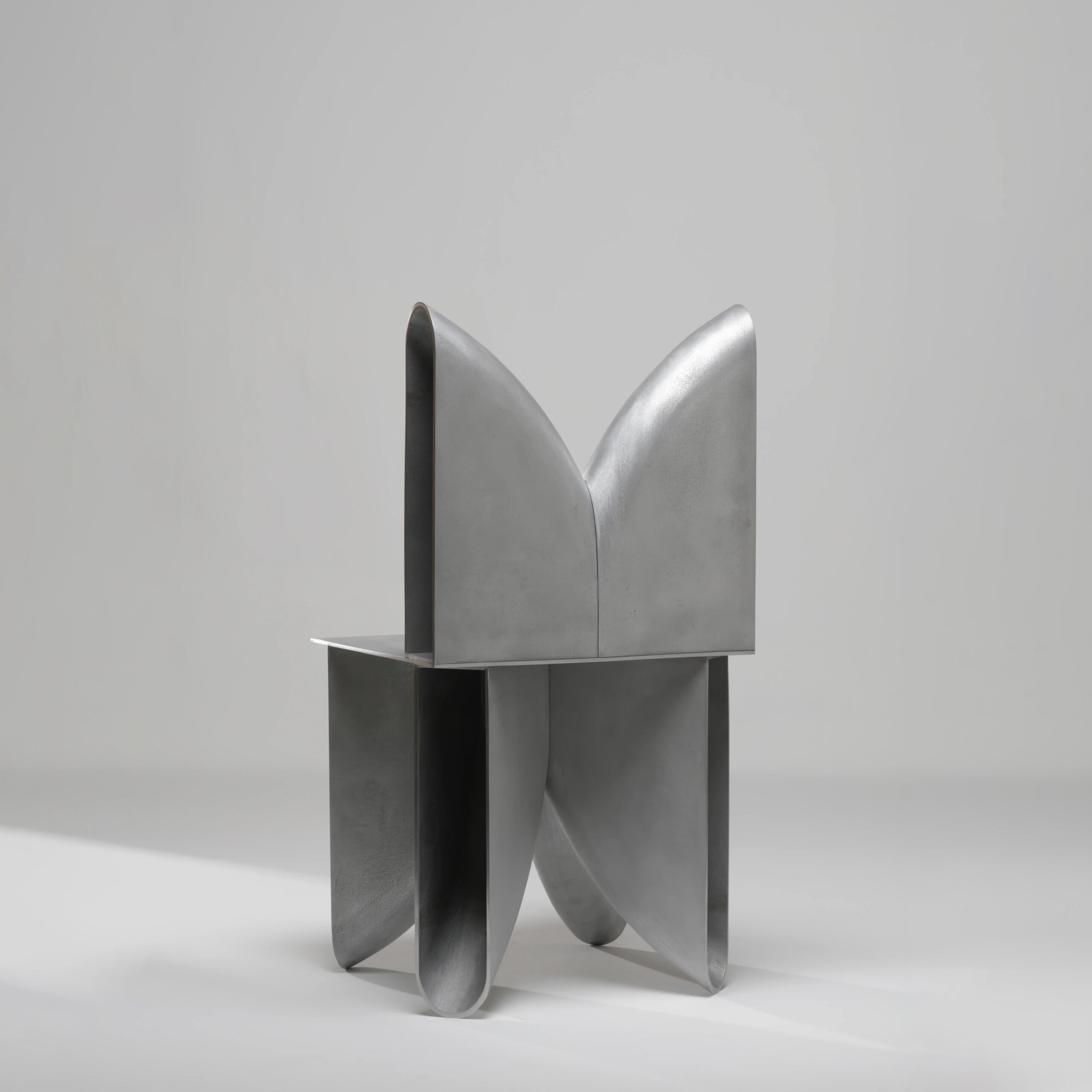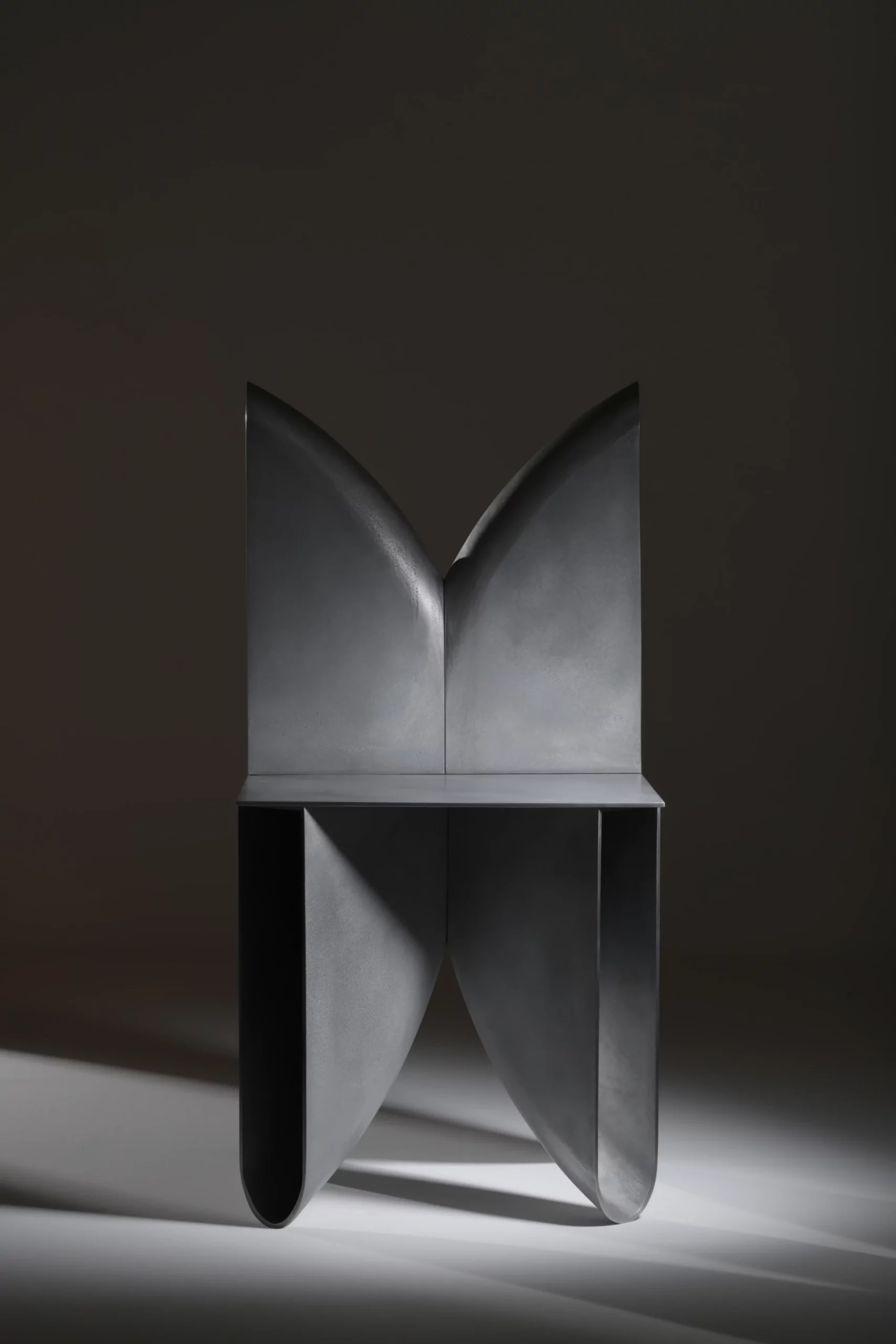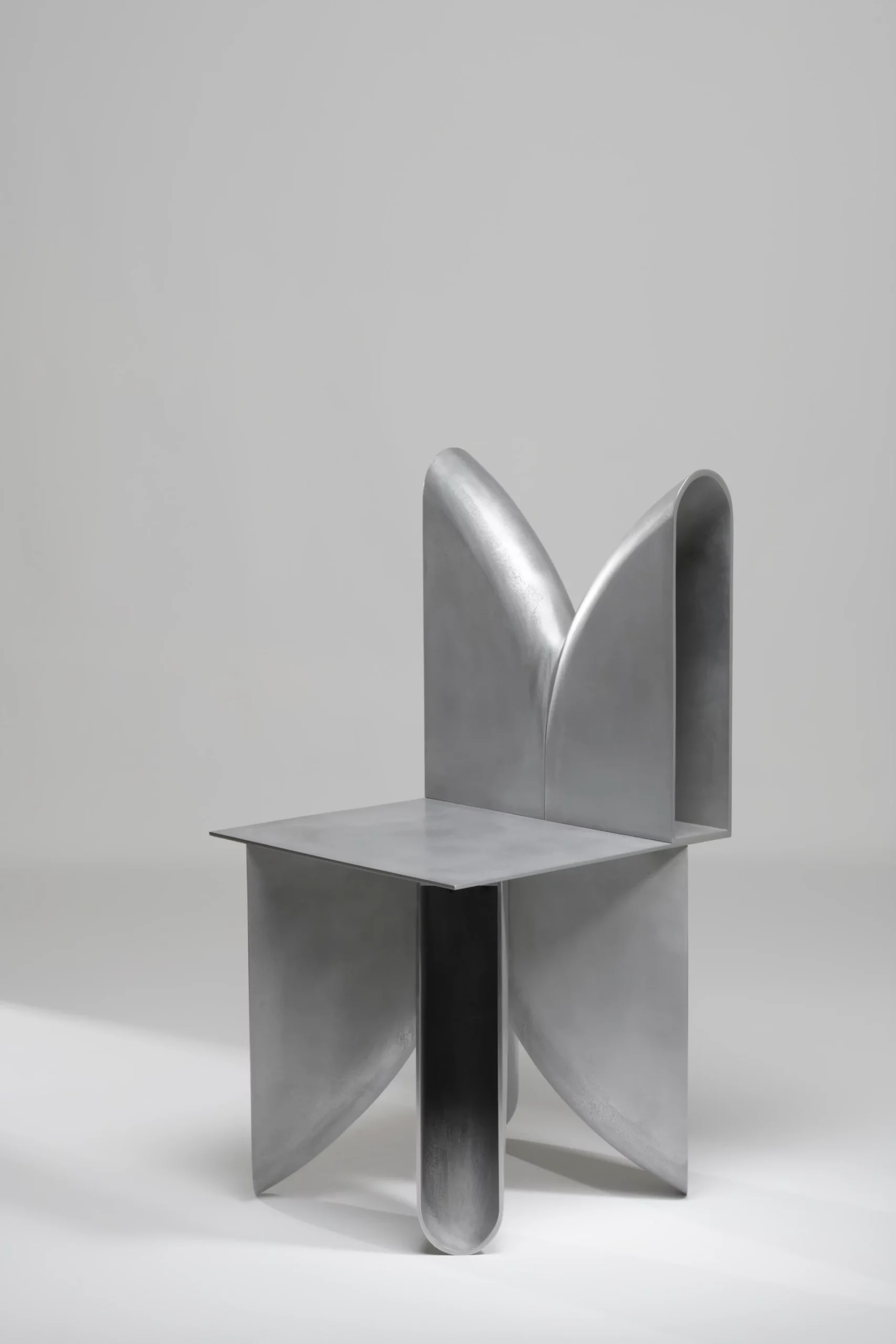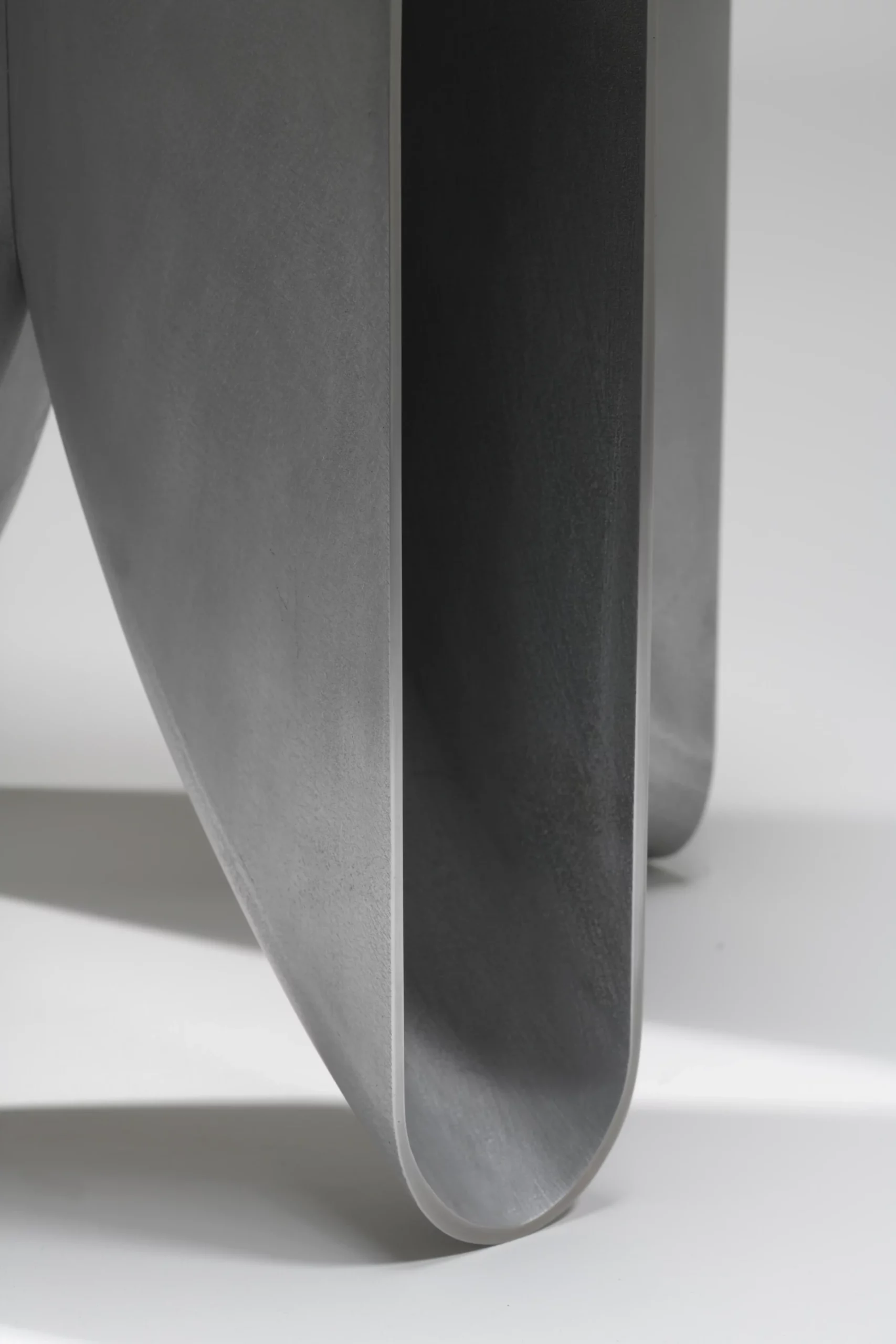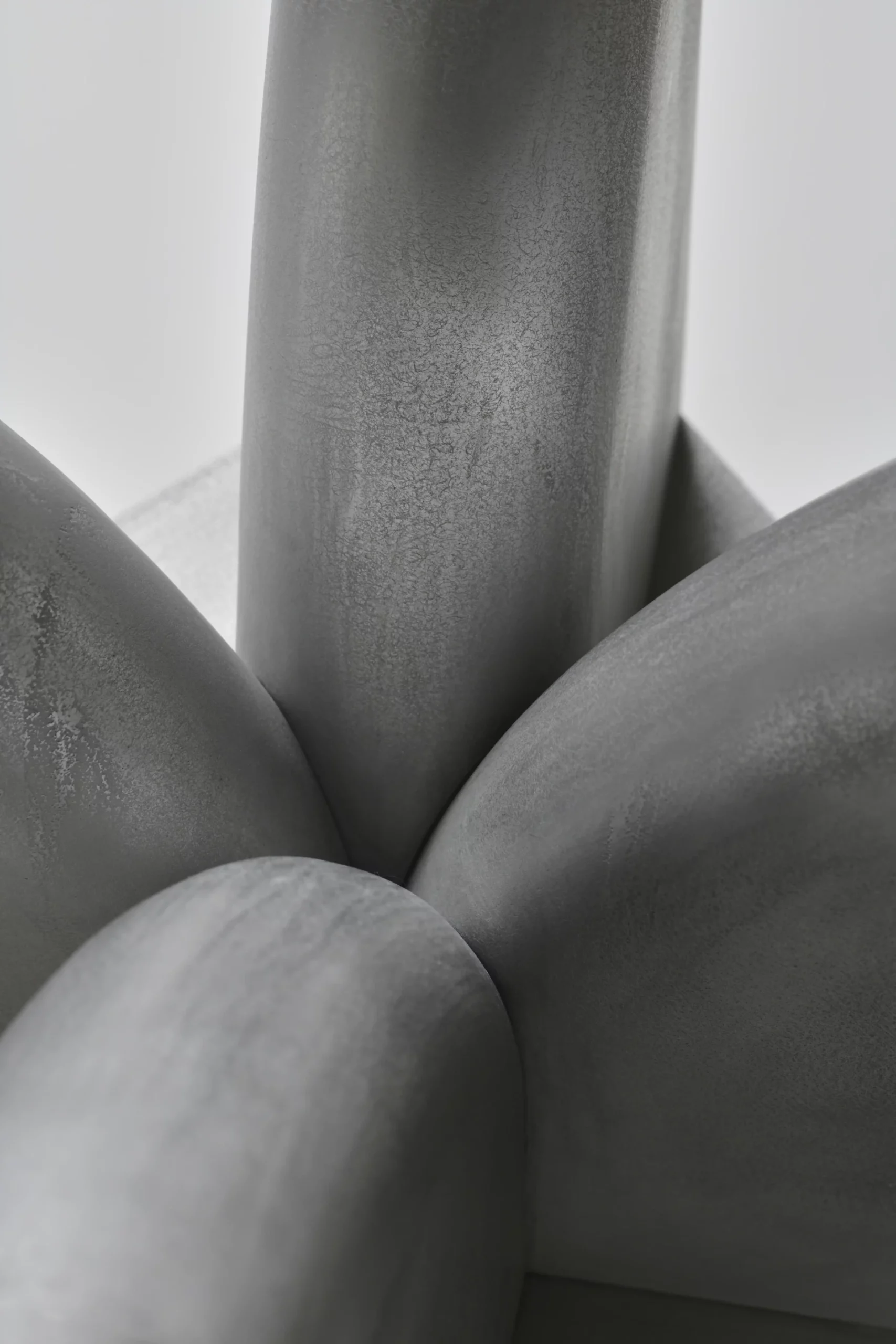BB Chair is a minimal chair designed by Paris-based CORPUS STUDIO for Lake Como Design Festival 2022. Neo-nomadism is the theme of this fourth edition, a concept that sweeps fluidly between real and digital life: a survey on new cultural and working nomadisms, on those that have always been present in the history of humanity and linked today to the gap economic and climate change. Neo-nomadism is perhaps not so much about mobility or traveling, as it is about adaptive responses to an increasingly dynamic world. Scientists, philosophers, discoverers, artists, and designers alike adapt to the world around them, forging new ideas and proactively exploring new territories of knowledge, science, aesthetics, and ideas, often blurring the lines between history and fantasy in the process of creation.
The BB Chair, too, alludes to fantasy, images, historic references, and ideas, without fixing on one specifically. The founding principle of the chair is the convergence of tectonic experiments in material and form, whereby, like in nature on a microscopic level, many identical parts make a whole. The basic structural form – a half of a simple wheel, forged from metal – is divided, repeated, and assembled in a poetic manner to make a chair that is aesthetically striking and surprisingly comfortable as the nape supports the back. The sand cast technique used also employs a process of repetition.
A single mould, hand carved from wood, is used to make a counter-mould from sand-resin into which molten aluminum, or another metal, is poured. After three pours in the sand counter-mould six pieces are produced, one for each of the chair’s limbs. The same sand-casted piece used to make the chair, will also be used to make other pieces in a collection, for example: a coffee table, pendant light, and chandelier. In turn, by adapting the mould to other objects, in a modular “open-source” way that justifies sustainable economic production, a constraint is created that allows for a new aesthetic exploration.
The result of this exploration is both minimal and maximal, brutalist and glamorous, sensual and humorous. Such ambiguous territory plays on emotions and puts the chair between art, design, and architecture. It is all three domains, rolled into one object, blurring the thin line between them. By bridging all three domains, the object itself becomes nomadic, through the transdisciplinary shifting and adapting of concept, technology and aesthetic.
